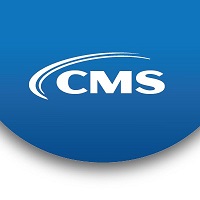 New tools set the stage for more robust state accountability in exchange for policy design flexibility
New tools set the stage for more robust state accountability in exchange for policy design flexibility
The Centers for Medicare & Medicaid Services (CMS) (@CMSGov) released new state tools and guidance that provide standard monitoring metrics and recommended research methods geared specifically for section 1115 demonstrations that test innovative approaches to Medicaid eligibility and coverage policies. The Trump Administration has ushered in a new era in Medicaid by restoring balance to the federal and state partnership through more flexibility to address local needs and accountability for program results. These tools and guidance reflect CMS’ commitment to discern whether reform demonstrations are achieving expected outcomes while testing and evaluating new approaches to improving outcomes for Medicaid beneficiaries.
“We are continually looking for ways to support state flexibility with greater accountability for program performance,” said CMS Administrator Seema Verma. “The best ideas from state leaders are worth testing, so we will continue to support Medicaid demonstrations paired with robust monitoring and rigorous evaluations.”
Recognizing their role as the laboratories of democracy, 1115 demonstrations allow states to test new approaches to providing services that differ from what is required by federal statutes. This flexibility emphasizes the importance of local leadership and allows CMS to demonstrate and evaluate state-specific policy approaches to better serve Medicaid populations.
CMS views states’ ability to test different approaches as an important tool for continuous improvement, and is committed to robust evaluation of demonstration projects in order to properly gauge their effectiveness. Eligibility and coverage demonstrations specifically allow states to test new policy approaches such as requiring work or community engagement (CE) among working age adults, providing premium assistance to purchase private coverage, and engaging certain beneficiaries through incentives and disincentives for meeting certain program requirements. These programs are designed to determine whether these approaches lead to targeted outcomes like increased employment, successful transitions to private coverage, better financial independence, and improved beneficiary health and wellbeing.
For each approved 1115 demonstration, states must provide CMS with regular reporting on key monitoring metrics upon implementation. States are also required to conduct evaluations by partnering with an independent evaluator. States are required to submit an evaluation design to CMS for approval following approval of the final demonstration. These monitoring and evaluation tools and guidance were designed to support these activities and were developed by CMS through a rigorous process with subject matter experts, a state monitoring advisory group, and contributions from experts in the field of evaluation research.
The resources include:
- Implementation plan template: This template provides a framework for the state to document its approach to implementing CE policies. It also helps to determine the appropriate information for the state to report to CMS in the quarterly and annual monitoring reports.
- Monitoring report template: The monitoring report template provides the state with a framework for how to report information to CMS on a quarterly and annual basis including quantitative monitoring metrics.
- Evaluation design guidance: The evaluation design guidance highlights key hypotheses, evaluation questions, measures and evaluation approaches, which states can use to inform the development of a rigorous evaluation of section 1115 demonstrations. This includes guidance specific for states pursuing community engagement demonstrations.
CMS will provide support to states to use and adopt these tools through individual technical assistance and through forums like our Community Engagement Learning Collaborative. CMS will provide specific instruction on these tools and guidance through a series of technical assistance sessions for states.
Please refer to the CMS blog by Administrator Seema Verma for more information.
